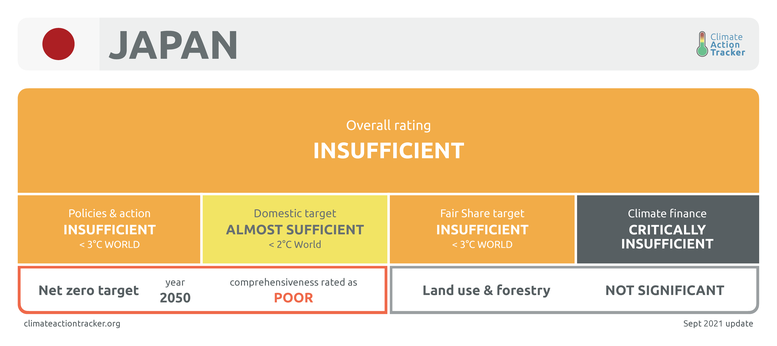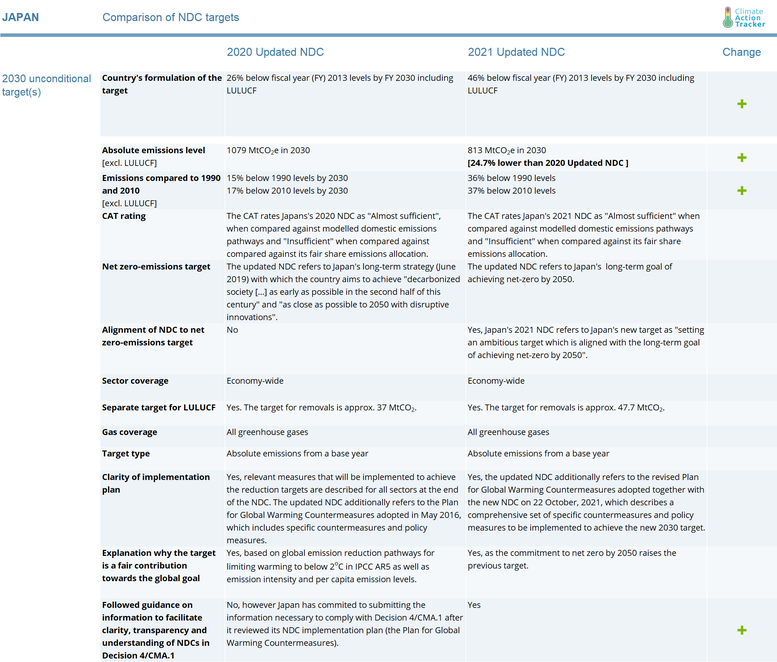Summary
Japan’s updated 2030 Paris Agreement target commits to reducing emissions by 46% below 2013 levels and to continue its challenge towards a 50% reduction. While the government did not fully live up to the expectations in the lead-up to Glasgow COP that it would commit to a 50% reduction target and join the club of global climate leaders, the new NDC is a significant step up from the 26% reduction target in its previous NDC. A recent CAT briefing estimated that a 60% reduction by 2030 would be required for Japan to be 1.5°C-compatible.
Together with the new NDC, the Japanese Government also approved a new Basic Energy Plan, a crucial step to deliver on the new 46% target. While the indicated share of decarbonised electricity is roughly in line with our 1.5°C benchmark, keeping 19% of coal-fired power generation is completely inconsistent with the virtually full coal phase-out needed by 2030.
CAT analysis of NDC announcement


Japan’s new 2030 climate target is a significant step up from its previous 26% target and sets the country onto a more sustainable pathway to reducing emissions to meet its long-term target—announced in October 2020—of net-zero greenhouse gas emissions by 2050. In absolute terms, the new target reduces Japan’s 2030 GHG emissions by at least 0.28 GtCO2e compared to its previous 26% target.
However, as noted in our recent brief, a 1.5°C-compatible benchmark for Japan would be to reduce its emissions by more than 60% below 2013 levels by 2030. The new target falls short of this ambitious benchmark, based on 1.5°C pathways with no or low overshoot, and also does not fully live up to the international expectations that Japan would clearly commit to a 50% reduction target and join the club of global climate leaders.
On the same day the new NDC was submitted to the UNFCCC, Japan also approved the new Basic Energy` Plan. According to the new energy plan, the government aims for 36–38% of total power generation to come from renewables in 2030. While the indicated share of decarbonised electricity is roughly in line with our 1.5°C benchmark, keeping 19% of coal-fired power generation is completely inconsistent with the virtually full coal phase-out needed by 2030. The reported 20–22% share of nuclear power also appears unrealistic, given the strength of local opposition to the re-opening of plants, and accompanying legal challenges (see our country assessment): our estimate is that it would be in the range of 5–17%, with the gap needing to be taken up by renewable energy.

Links
Stay informed
Subscribe to our newsletter